US stocks markets suffered the steepest decline since October after Fed give investors a reality check on the state of the economy. FOMC kept monetary policy unchanged, and reiterated: “The path of the economy will depend significantly on the course of the virus, including progress on vaccinations. The ongoing public health crisis continues to weigh on economic activity, employment, and inflation, and poses considerable risks to the economic outlook.”
Chair Jerome Powell admitted, “the risks are in the near term, frankly”. The economy was still a long way from a full recovery while “the whole focus on (stimulus) exit is premature.” Though, “several developments point to an improved outlook for later this year”, with vaccine rollouts.
More on Fed:
DOW dropped -633.87 pts, or -2.05%, to close at 30303.17 overnight. While the pull back was deep, DOW is still staying above 55 day EMA (now as 30098.59) for now. More importantly, 29881.82 near term support remains intact, keeping outlook bullish. DOW could indeed rebound from the current level and stage another rally to extend the up trend from 18213.65.
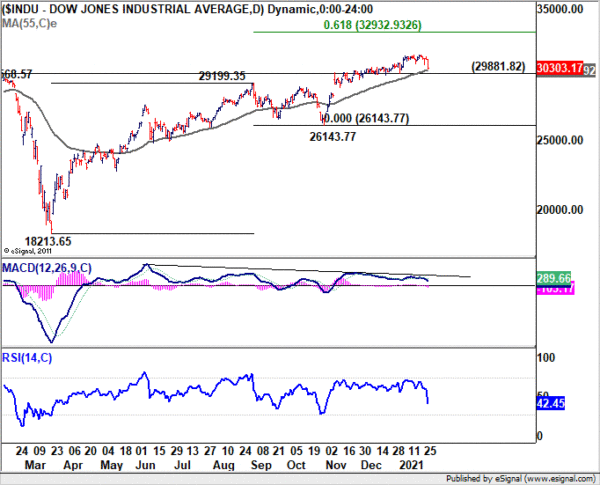
10-year yield also extended near term correction, closed down -0.026 at 1.014. While deeper fall cannot be ruled out, TNX is also close to a key support. 55 day EMA (now at 0.9629), which is close to channel support, should provide the floor.
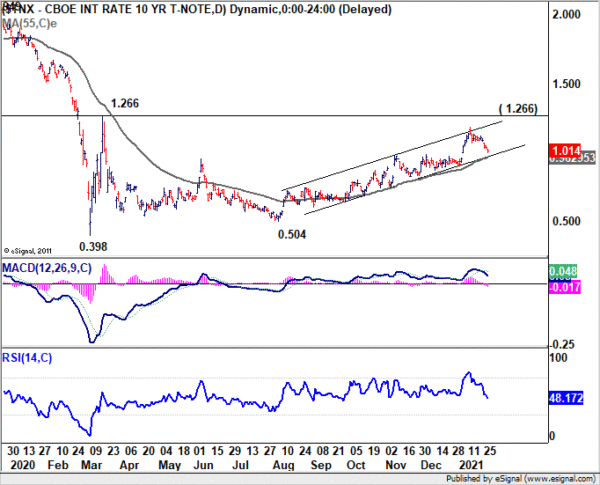




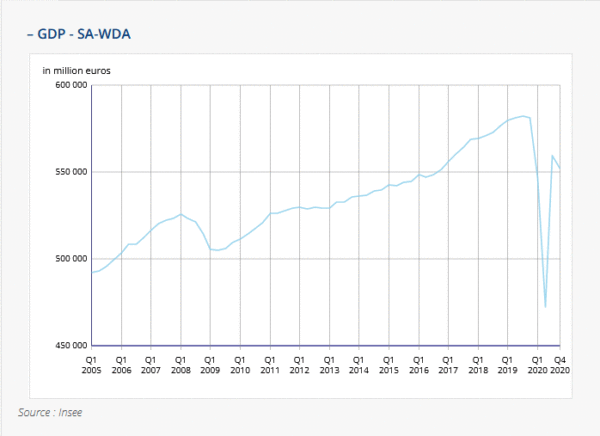
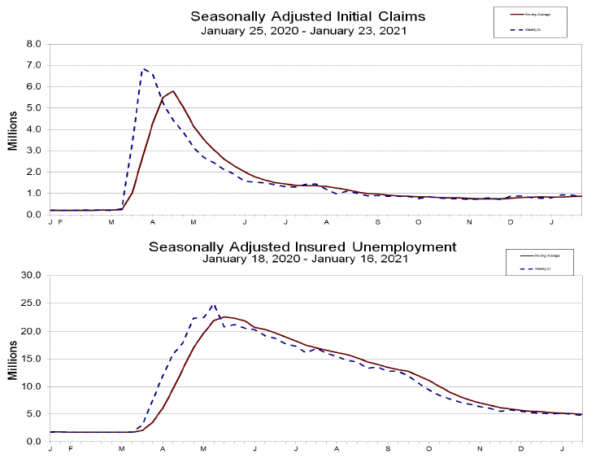
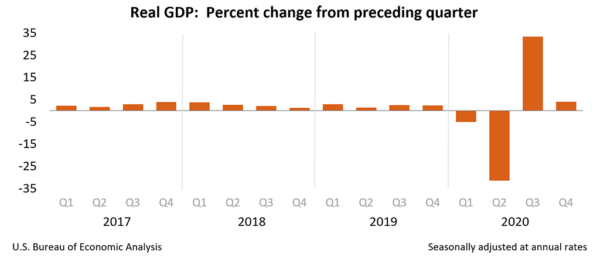
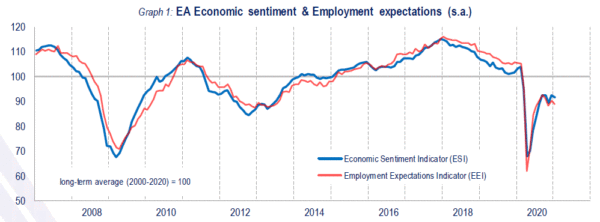
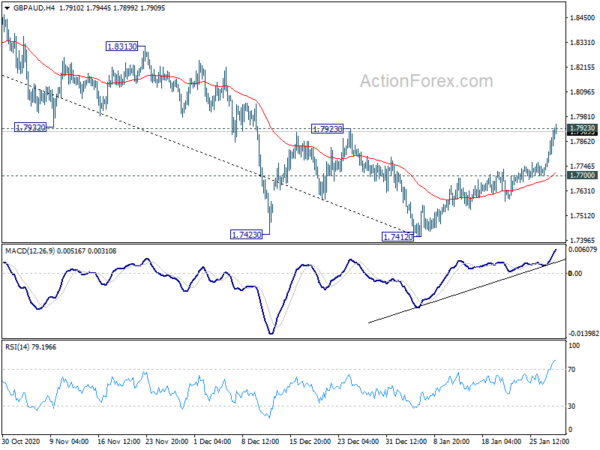
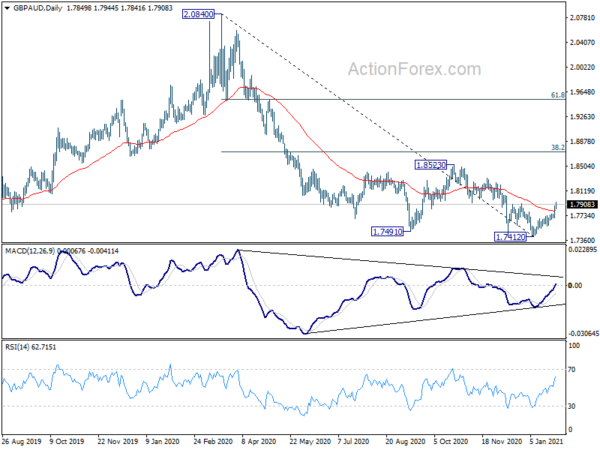
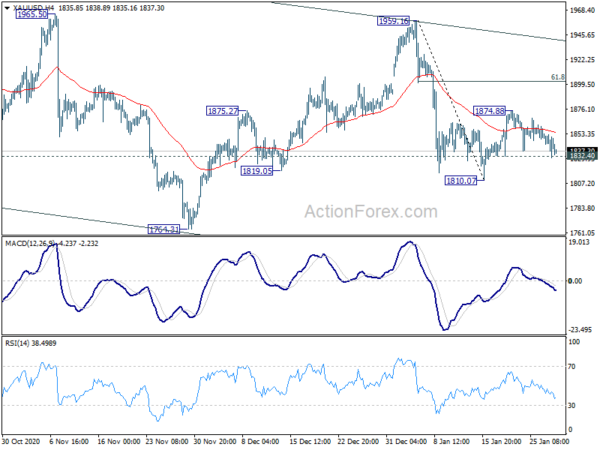
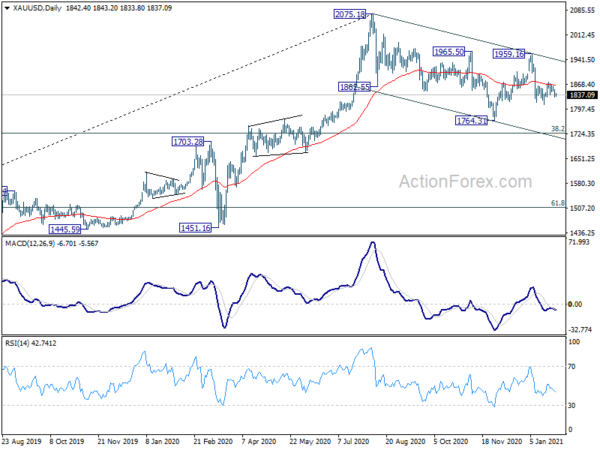
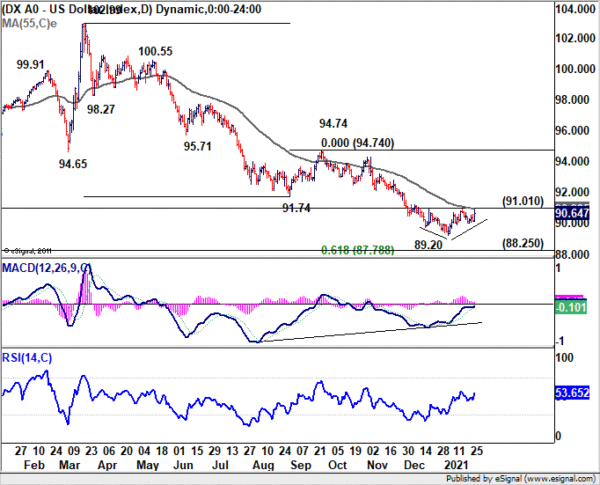
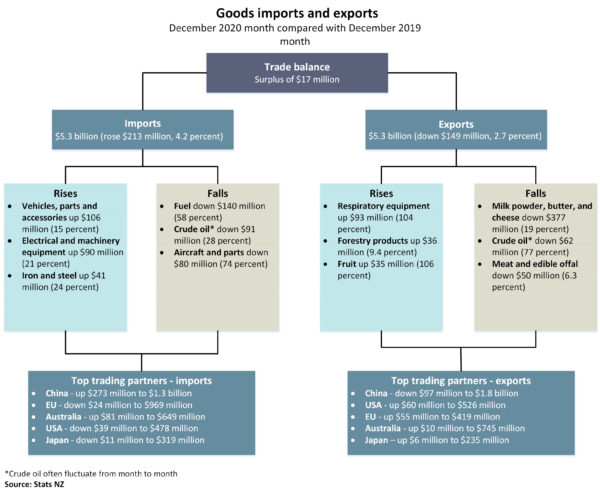


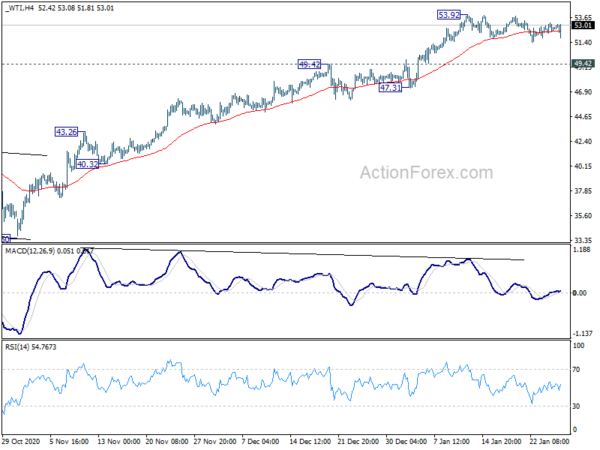
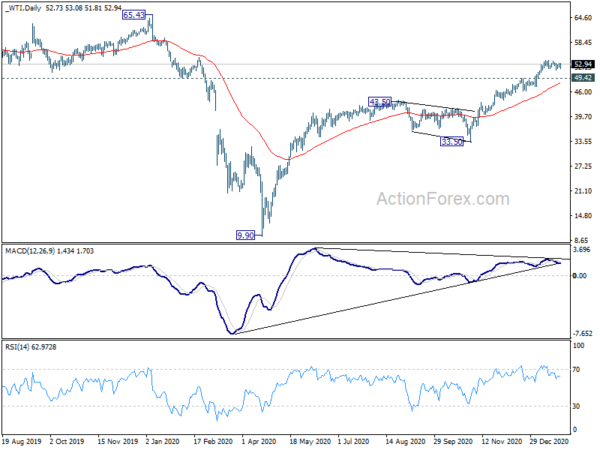
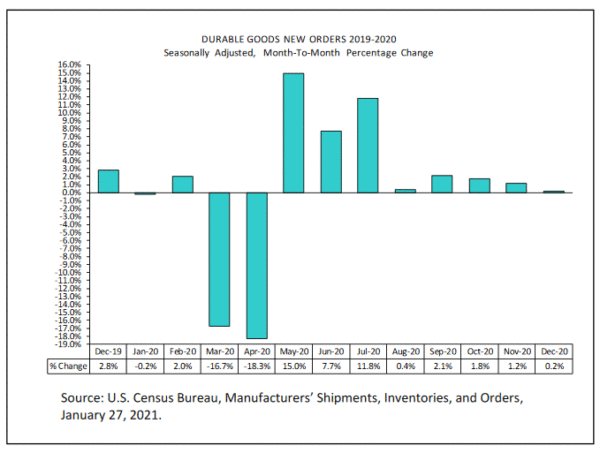
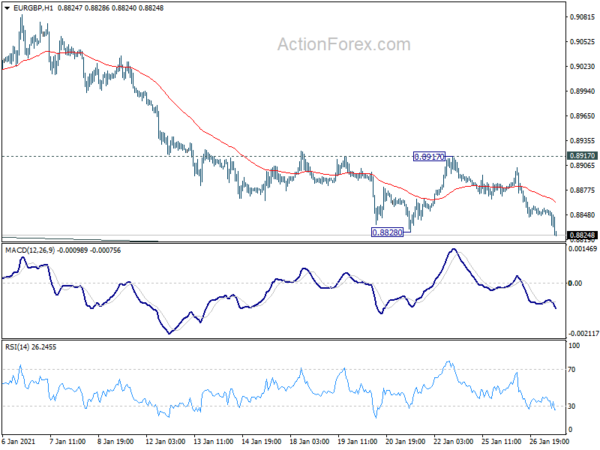

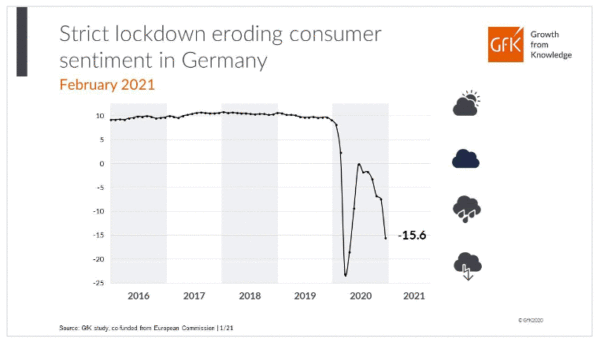

Swiss KOF dropped to 96.5, gloomy economic prospects at beginning of the year
Swiss KOF Economic Barometer dropped to 96.5 in January, down from 104.1, missed expectation of 101.5, and back below long-term average of 100. KOF said, “after reaching an interim pandemic high in September, COVID-19 is now weighing more heavily on the economy again. The pandemic is causing gloomy economic prospects at the beginning of the year.”
“Responsible for the decline are in particular the indicator bundles for accommodation and food service activities as well as other services,” KOF added. “But the outlook for manufacturing, financial and insurance services and private consumer demand is also less favourable than before. The outlook for construction is stable and foreign demand could provide a stronger impulse.”
Full release here.